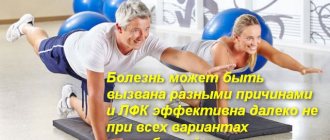Breathing exercises
Performing exercises helps achieve the following results:
- muscle activation;
- regulation of rhythm, tempo and ratio of inhalations and exhalations;
- mastering the technique of diaphragmatic breathing.
Gymnastics is accompanied by sounds, their combinations and words. Training must be systematic and well-structured. This contributes to the child’s rapid recovery.
The purpose of the complex is to stabilize breathing and ensure its smoothness during the pronunciation of words. The amount of air coming out should be sufficient so that the phrases are not interrupted. It is better to conduct initial classes with a specialist, after which they can be performed at home. Over time, the level of difficulty of the exercises increases.
General rules for performing exercises
Stuttering is a common name; in medicine it is characterized as logoneurosis. When performing special exercises, generally accepted rules should be followed, especially when it comes to children:
- A friendly atmosphere is created - without complaints, reproaches, or coercion. The main thing is to be patient.
- Not all children like to study, so it is necessary to captivate the child by creating a form of play.
- If a person completely refuses to do the exercises, do not force him. In this case, you will have to adopt a wait-and-see approach, and then conduct classes in the process of communication. That is, the patient should not suspect that this is a therapeutic measure.
- When performing articulatory exercises, the patient must stand in front of a mirror to control the correctness and accuracy of each exercise.
- Charging is carried out systematically, without long breaks or omissions. Otherwise, it is impossible to achieve the desired result. In addition, this will allow the baby to get used to it, and in the future he will begin to study on his own without realizing it.
- The minimum duration is 2 months.
Types of breathing exercises
There is such a division of exercises:
- statistical - performed without movements;
- dynamic - produced with the addition of elements of movement.
There are several poses for performing them:
- lying on your back;
- sitting on a chair;
- standing;
- in move.
Initial exercises are best done lying down. This pose is the most comfortable. After this, gymnastics is performed in other positions. When the child begins to fully control breathing, training is stopped.
Voice exercises
With the help of voice exercises you can achieve significant results and get rid of hesitations in speech:
- Singing is considered the most highly effective method. To do this, you need to turn on music with songs that are familiar to you. The condition is that the emphasis when chanting should be on the vowels (“o”, “a”, “e”, etc.).
- There are many sound words that can be used for practice. For example, “viburnum”, “sun”, “kitty”, etc. The task is to pronounce the same word in different intonations - affectionately, maliciously, softly, rudely.
- Theatrical performances are more relevant for children, but adults can also participate in them. A special condition is that the role must contain many phrases and sentences.
- This activity involves 2 people at once. One throws the ball and the other catches it. Each of the participants must sharply pronounce the word: if it is edible, the ball must be caught, if not, it must be pushed back.
- You can use simple syllables - tsa-tsa, sho-sho, no-no, etc. Initially, they are pronounced at a slow and smooth pace, then they accelerate. As a result, the patient must learn to speak them clearly and rhythmically.
General recommendations
Before classes, it is necessary to ventilate the room and clean it. It is forbidden to do gymnastics after eating. It is better to choose light clothing made from natural fabric. The tasks of the complex and the pace of their implementation must be dosed correctly.
The technique of logorhythmic exercises provides the following recommendations:
- Inhale through the nose (lips slightly closed), and exhale through the mouth. There should be no breaks between them.
- The child should not inhale at full strength, and there is no need to exhale all the air. They do it naturally, without much effort.
- While exhaling, say several words (3–4) together.
- In large sentences, make meaningful pauses.
- It is worth making sure that your breathing is even and calm.
- The muscles should be relaxed. It is prohibited to move your shoulders when performing the complex.
Exercises for muscles
Sounds are squeezed out of the larynx through the close interaction of the muscular system and the vocal apparatus, so muscle development plays an important role. Proper breathing is created by the diaphragm, which is surrounded by muscle fibers. The exercises presented below strengthen the vocal cords and improve lung functionality.
Example of effective activities:
- Stand up straight, take a breath as deeply as possible. You should feel the volume in your chest increase. Next, exhale quickly and rhythmically, accompanied by sounds like “hoo-oo-oo-oo-oo”. One breathing cycle is 15 times. The minimum daily exercise rate is 10 times.
- Hold your breath for half a minute, exhale.
- Starting position – standing on your feet. Move your abdominal wall frequently and quickly, increasing pressure on your abs.
- To increase the excursion of the sternum and speed up the blood supply process, it is useful to run for at least 15 minutes every day.
- Alternative medicine recommends yoga. A specialist selects a specific complex.
Exercises of the method of A. N. Strelnikova
The most popular type of breathing exercises, which is recommended for logoneurosis, was developed by the opera singer Strelnikova to combat attacks of suffocation. Over time, it was recognized by experts as an effective method against stuttering. It is simple, so it is suitable even for preschoolers.
Speech therapy classes should occur 2 times a day: morning and evening. Their duration is no more than half an hour. In Strelnikova’s complex, much attention is paid to inhalations. They must be fast. In the first days, perform 8 “inhalation-movements” in 12 approaches (with an interval of several seconds).
It is worth considering that mild dizziness may occur when performing tasks.
The complex is large. Below are frequently used exercises to combat logoneurosis.
"Palms"
Arms are bent at the elbows, raised to shoulder level. Palms are straightened, directed parallel to the floor. Take 4 sharp breaths, squeezing your palms. The exhalation should be long, through the mouth, with the palms unclenched at this time. Then they take a short break. If necessary, the interval between approaches is increased to 10 s.
"Epaulettes"
Performed while standing. Hands on the belt, hands clenched into fists. Inhale – the shoulders tense and lift. Exhale – shoulders lower, fists raised, forming shoulder straps.
"Pump"
Pose: standing, feet shoulder-width apart. As you inhale loudly, bend forward, stretching your arms toward the floor and rounding your back. Exhale slowly and calmly.
"Hug Shoulders"
Perform while standing, arms bent at the elbows, elbows pointing down. They take a noisy breath, hugging themselves by the shoulders, and pulling their head back. Exhalation should be free.
"Cat"
Get on all fours. Take a quick breath - round your back, tilt your head down. Exhale slowly – straighten up.
"Pendulum"
Pose: standing (or sitting), feet shoulder-width apart. Inhale loudly and quickly - lean forward and reach your hands towards the floor. A sharp exhalation - return to the starting position.
Speech therapy exercises
The main specialist who conducts the classes is a speech therapist. He develops an individual treatment plan. There are many methods, but there are also standard speech therapy exercises:
- Tongue development (repeat each exercise at least 10 times): a person puffs out his cheeks, then runs his tongue along his own teeth, maintaining rhythm;
- stick your tongue out and put it back into the oral cavity - quick movements;
- placing the tongue under the lips (upper and lower);
- twisting the organ into a tube.
During classes, the speech therapist should try to liberate the patient so that he does not feel awkward and is in a calm state. Quite often, doctors resort to the heart-to-heart conversation method. If you touch on a topic that worries the patient, he will start talking about it non-stop. This will lead to the fact that the person himself will unconsciously begin to pronounce speeches without stuttering.
Other exercises
In addition to Strelnikova’s large-scale complex, there are other types of breathing exercises:
- The child lies on his back. Inhales, inflating his stomach. After this, he exhales slowly with the sound “Pfaff”. Breathing is smooth and calm. You can put a soft toy on your baby’s stomach, then he will watch with interest how it lowers and rises.
- Make small balls out of cotton wool and blow on them with the child. The task is then complicated by placing the lumps on a terry towel, when the child needs more air and strength to blow them away.
- The baby holds his breath for as long as possible.
- Soap bubbles will also serve as good gymnastics.
- The baby can blow into the water using a straw.
These exercises are very fun for children. They will do them with pleasure.
Game exercises
Games for stuttering can be divided into two types: relaxing and rhythmic. The first ones relieve spasms of the facial muscles; they should be carried out in the evening, at night. The latter work as a simulator for practicing breathing rhythm and developing speech speed. Offer active games to your child in the first half of the day.
Football
An exciting game for normalizing the pronunciation of sounds when stuttering. You will need a large piece of cotton wool and several toys to organize a team. The child puts the cotton wool in front of him, takes air into his lungs with his nose and blows on it with his mouth, tries to score a goal with an improvised ball into the goal of his plush opponents. Place bears and hares 40-50 cm away from the child on the table. Be sure to say in which direction the fleece should roll so that the air stream is directed towards the target.
Don’t forget to praise your child for correctly completed tasks, and encourage the spirit of competition and excitement.
Chick
The child improvises birdsong using any vowels. It is important to inhale the air through your nose and hold out the sound for as long as possible. Offer to sing not only evenly, drawn-out, but also to make sonorous modulations: a-a-a-o-o-o-o-u-u-u, i-i-i-e-e-e-e-e and others.
Do the math
The child puts his hand on his tummy and takes a deep breath through his nose. Bends the fingers on his free hand, counts the fingers on one exhalation. Gradually make the tasks more difficult by increasing the final number. A child under 6 years of age can count up to 5 on one exhalation, and after 6 years - up to 10, bending the fingers on both hands.
Cat
This game helps the child control the fluency of speech. The kid stands up and crosses his arms over his chest. Bends to the sides, exhales, rises to the starting position and pronounces the vowels: a-a-a, u-u-u, i-i-i, e-e-e. It is important to stretch them for a long time, do not inhale them again, you can sing them.
Jug
The game is necessary for the formation of vocal delivery and speech breathing. The child raises his hands up, as if about to dive into the water, inhales very deeply through his nose. He lowers his arms like a swimmer, bends over completely and sings long sounds (vowels). For the next inhalation, you need to get back to the starting position.
Candle
The game creates smooth syllabic pronunciation. The child pronounces the syllable: Ma-a-a, Pa-a-a, Ru-u-u, Zi-i-i, at the choice of the teacher. He folds his hands, palms facing each other. Inhales air through his nose. At the moment of articulation, he makes zigzag movements with his hands, lowering them down, depicting a candle flame. At the same time, one of the syllables is sung smoothly.
Car
The child sits on a chair and the teacher sits behind him. They represent a car. First they turn the steering wheel and hum like a motor: w-w-w. The sound is pronounced without stopping, in one breath. Then the car stops, the child takes a deep breath and shrugs. This helps relieve muscle tension.
Pump
Can be included in the game by linking it with the previous exercise. Tell your child that the car has a flat tire and needs to be pumped up to continue the journey. The child stands up and raises his arms to his chest. Inhales deeply, lowers the pump to the floor, at this time stretches out vowels as instructed by the teacher or parent.
Watch this set of exercises in video format:
Note: according to Dr. Komarovsky, there is no need to choose between medication and relaxation (massages, breathing exercises) treatment of stuttering in children; it is necessary to combine both methods of correction.
Articulation gymnastics
A very effective way to treat stuttering in children, which is used together with breathing exercises. During gymnastics, the muscles of the articulatory apparatus are trained. The complex includes the following exercises:
- puffing out the cheeks - first together, then separately;
- patting lips (fish movements);
- alternately pressing the tongue on the cheeks;
- puffing out your cheeks, and then deflating the air by hitting them with your fist;
- “cleaning” teeth with the tongue;
- lip biting.
In addition, the child may cough or yawn several times. This must be done with your mouth open.
Rhythmic gymnastics
Quite often, people who stutter lack a proper sense of rhythm, so it is important to develop it. This will reduce nervousness and anxiety (which often occurs in patients when pronouncing words). You just need to do two steps:
- Read poetry or prose, but with expression, since at the same time you need to tap your fingers on the surface of the table. The main condition is that the beat of the knocking coincides with the reading.
- You need to pronounce the words of the text accompanied by music. Moreover, the music should be different in each lesson.
Other stuttering correction methods
In addition to the main therapy, other exercises are used, which are also highly effective:
- It is very useful to chant soft notes. To interest a child, it is enough to use a regular ball in the game. For example, when throwing it on the floor, it is pronounced “do”, against the wall - “mi”, etc.
- Bell. Initially, you need to sing “bo-o-o-om” in a bass voice, then, making your voice a little thinner, “be-ee-ee-um,” then “bi-i-i-im.” After this, sound the “bell” in reverse order.
- Chant the vowels with increasing and decreasing volume: first quietly, then louder, even stronger, and then quieter.
- Snort like a horse, using your lips.
- Inflate and deflate cheeks.
- Bite your lips alternately.
- Move your tongue from one side of your mouth to the other.
- Puff out your cheeks and draw in rhythmically.
- Open the oral cavity, create an artificial yawn (yawn forcefully 6 times), then, without closing your mouth, cough the same number of times.
Features of classes with children
Unlike adults, children do not yet understand the complexity of their speech problem. Therefore, they have no particular desire to conduct constant training. Therefore, parents should push them to do this, but in such a way that the activities are not a burden to the child. To do this you need to adhere to the following rules:
- Never force or bring a child to tears with persuasion. Ask to do this or that exercise in a gentle tone. Remember, children should be in a calm state.
- Eliminate shouting, quarrels and scandals at home. When a child is in a friendly environment, his interest in activities awakens.
- Always make training feel like a game.
- Do not try to engage with him in the presence of strangers. The baby will withdraw.
- Control his breathing and the accuracy of each action. At the same time, correct incorrect movements with love.
- Sing together more, learn poetry. First at a slow pace, then speeding up.
- Reduce the demands of your daily life so you have more time to spend on activities.
- Always praise and encourage.
- Never tell your child that stuttering is shameful.
- Be sure to seek help from specialists.
Features of exercises for adults
It is much easier for adults to carry out training because they understand the essence of the problem, know how to concentrate, and understand how to do the exercises correctly. For this reason, there are no special requirements for them. The main thing is to strictly follow the recommendations of your doctor, do not self-medicate and do not listen to the advice of those who are far from medicine.
Exercises for stuttering are the basis for getting rid of this problem. On the Internet you can find a wide variety of recommendations for performing workouts and sets of exercises. But a sane person should be guided by the doctor’s instructions, who will draw up an individual exercise therapy regimen based on various factors.











